#cologne brutal architecture
Explore tagged Tumblr posts
Text





christi verklärung // köln heimersdorf
architect: josef lehmbrock
completion: 1966
a small gem of cologne's post-war modernist church architecture can be found in heimersdorf. it has a cruciform floor plan and is clad in panels in various shades of anthracite. the monumental rose window is the building's outstanding feature. unfortunately, the building was under construction when i visited, so i wasn't able to see the interior. it's a shame, because it's a little brutalist gem. at least you can always visit it digitally at: https://kurzlinks.de/ptkc
eine kleine perle des nachkriegsmodernen kölner kirchenbaues befindet sich in heimersdorf. sie besitzt einen kreuzförmigen grundriss und ist mit platten in verschiedenen anthrazitschattierungen verkleidet. die monumentale fensterrosette ist das herausragende merkmal des bauwerkes. zumindest immer möglich ist es digital unter: https://kurzlinks.de/ptkc
#photography#architecture#germany#architecture photography#design#urban#nachkriegsmoderne#post war architecture#nachkriegsarchitektur#cologne#rhineland#rhineland post war modern#rhineland post war architecture#cologne post war modern#german post war modern#deutsche nachkriegsmoderne#nachkriegsmoderne köln#nachkriegsmoderne rheinland#christi verklärung köln#josef lehmbrock#kunst am bau#art in architecture#heimersdorf#köln heimersdorf#brutalismus#brutal architecture#german brutal architecture#cologne brutal architecture#modern church architecture
239 notes
·
View notes
Text

Church St Gertrud (1963-65) in Cologne, Germany, by Gottfried Böhm. Photo by Theresa Dietel.
#1960s#church#concrete#brutalism#brutalist#architecture#germany#nachkriegsarchitektur#nachkriegsmoderne#architektur#cologne#gottfried böhm
166 notes
·
View notes
Text

L’Église Saint-Nicolas, Heremence, Switzerland. Designed by Walter Maria Förderer, constructed 1967-1971.
Jamie McGregor Smith Illuminates Europe’s Most Striking Brutalist Churches in ‘Sacred Modernity’
All photos © Jamie McGregor Smith, courtesy of Hatje Cantz

St. Paulus Kirche, Weckhoven, Dussoldorf, Germany. Designed by Fritz Schaller and Stefan Polónyi, constructed 1966-1970

Interior of Christi Auferstehung Kirche, Cologne, Germany

Kościół św, Dominika, Poland. Designed by Władysław Pieńkowski, constructed 1985-1994
#jamie mcgregor smith#photographer#sacred modernity#non-fiction book#architecture#europe#brutalist churches#l'eglise saint-nicolas#heremence#switzerland#brutalism#st. paulus kirche#weckhoven#germany#christi auferstehung kirche#cologne#kosciol sw#dominika#poland#interior architecture
6 notes
·
View notes
Text
Worldbuilding 101: Architecture (Part 1)
When making your cities/towns in your story, keep in mind what kind of architecture you want. You don't want just a regular sky with regular tall buildings in your world if its supposed to be otherworldly, think about the type of architecture you want. Unless regular cities is your thing.
Today, we will go over different types of architecture for worldbuilding! ^^
1. Brutalist Architecture
Brutalism is a style of architecture that emphasizes raw materials, construction, and texture. Brutalist buildings are known for their exposed concrete and brick, geometric shapes, and monochromatic color palette.
Origins
☆The style originated in the United Kingdom in the 1950s
☆The term "brutalism" was first used in 1953 by Alison Smithson
☆The style was popularized by Reyner Banham's review of the Smithsons' school in Hunstanton, Norfolk in 1955
Examples of Brutalist Architecture:



Vomc's "Black Fox" Headquarters Building Inspired by the Architecture:



2. Gothic Architecture
☆Cologne Cathedral in Germany is a great example of Gothic Architectutre.
☆The gothic style of architecture originated in Europe's Middle Ages. It is characterized by vertical proportions, pointed arches, external buttressing, and asymmetry
☆It was well-used in antique Church designs of the 17-18th centuries.
Examples of Gothic Architecture:



Part 3 in Reblogs (Yes this is tagged as Hazbin/Helluva Critical, as I also want Critics to have inspiration for their architecture in their rewrites/worldbuilding ^^)
#art#illustration#oc#venicium: of my circulation#vomc#original art#worldbuilding#helluva boss critical#hazbin hotel critical
35 notes
·
View notes
Text

Schattenspiel
St. Johannes XXIII - Heinz Buchmann & Josef Rikus, 1968-1969
11 notes
·
View notes
Text










Bruder-Klaus Field Chapel, Peter Zumthor, 2010 (photos from 2013, July)
#architecture#cologne#germany#chapel#peter zumthor#Architecture and phenomenology#2010#architect#landscape and Architecture#light in Architecture#brutalist#brutalism#brutalist architecture#concrete#concrete architecture#detail in Architecture#architectural design#design#architecture photography#image#image making#architectural travel#Architecture travels#travel photography#experience of architecture#space#form#space and form
4 notes
·
View notes
Photo

silos cologne, germany // 09-2018 © 2018 waidwund-photo
#photographers on tumblr#original photographers#architecture#brutalism#urban landscape#köln#cologne#waidwund photo#josch schlegel#traces of human life
207 notes
·
View notes
Photo




doris dörrie, {1994} keiner liebt mich (nobody loves me)
#film#gif#doris dörrie#keiner liebt mich#nobody loves me#1994#female filmmakers#köln#cologne#colour#coffins#trains#birds#brutalism#architecture#dawn#night#pink#films#.gif#bicycles
10 notes
·
View notes
Photo

Brutalisim Architecture at the cologne Airport #architecture #brutal_architecture #brutalism #cement #lights #art #harsh #prespective #cologne #airport
2 notes
·
View notes
Photo

AUGUST SANDER - La nouvelle objectivité, l’Allemagne des années 20.
Première vue d’ensemble sur ce courant artistique en France, l’exposition pluridisciplinaire du Centre Pompidou se penche sur l’art et la culture de l’Allemagne des années 1920, dans un parallèle avec l’œuvre du photographe August Sander.
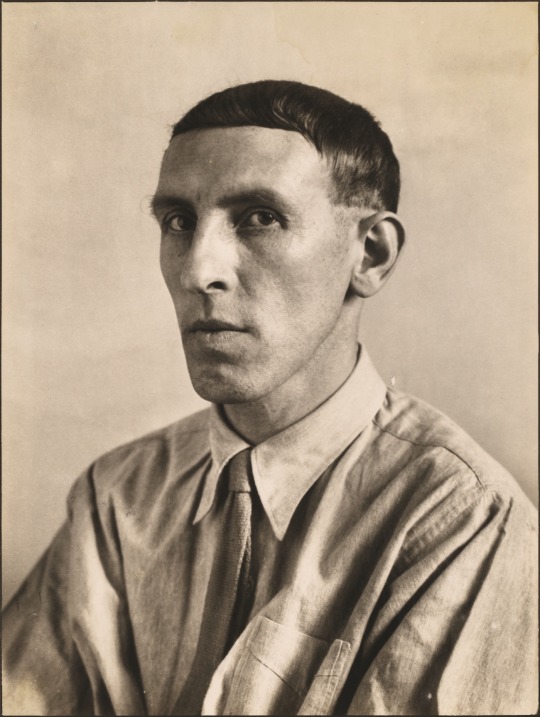
L’ensemble de cette exposition aussi riche qu’inédite trace un parcours qui donne toute leur visibilité aux représentations artistiques de l’Allemagne d’August Sander, qui fit de l’objectivité absolue le principe premier et exclusif de son travail.
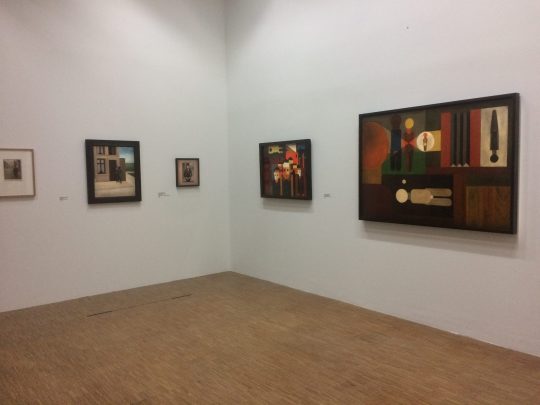
Entre les deux guerres mondiales, l’Allemagne fut un creuset où nombre de révolutions plastiques se mêlèrent en s’opposant. Né avant-guerre, l’expressionnisme et l’abstraction y respirent encore, mais leur élan a été brisé par le conflit et ses dégâts collatéraux. La vocation spirituelle de l’art, ses ambitions idéalisantes, son apologie de l’imagination créatrice, la confiance qu’il accordait à la subjectivité émancipatrice ne sont plus à l’ordre du jour.

En réaction, un nouveau ce courant artistique va naître et prendre de l’importance, baptisé Neue Sachlichkeit, autrement dit Nouvelle objectivité, il va se développer en imprégnant toutes les formes d’expressions artistiques et culturelles de la société allemande jusqu’en 1939.

Au sortir de la première guerre mondiale, c’est une ère de contrastes qui s’ouvre dans une Allemagne aussi désabusée que riche de créativité. D’un côté, les aspirations démocratiques naissantes de la République de Weimar, l’essor fulgurant de la technique, la libération des mœurs, voire d’une marginalité jusqu’alors réprimée. De l’autre, la fin des illusions et des utopies terrassées dans l’enfer des tranchées, la violence irréfrénée du développement industriel, et la montée des totalitarismes.
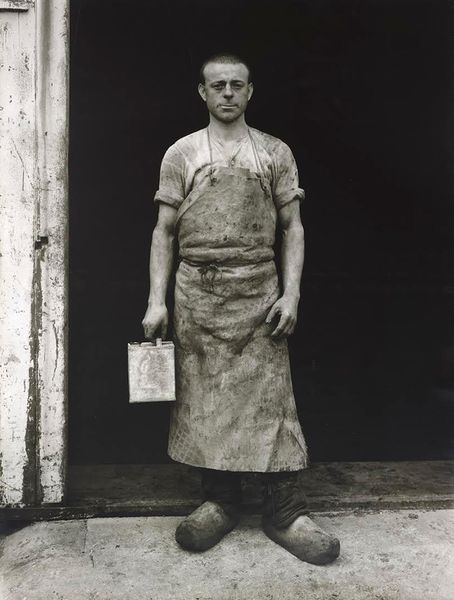
L’arrivée au pouvoir du nazisme, en 1933, mettra brutalement fin à la vague créative de la Nouvelle Objectivité, qualifiée « d’art dégénéré » par les représentants du Troisième Reich qui ordonnèrent la destruction de très nombreuses œuvres des artistes associés au mouvement.

Pour beaucoup inspirés par les idéaux socialistes, ces derniers dépeignent une société aux antipodes des dérives fascistes qui s’annoncent, célébrant tour à tour la solidarité entre les travailleuses et les travailleurs, la transgression des normes, le progrès humain, l’émancipation sexuelle, tout en dénonçant les souffrances dues au militarisme et la grossièreté brutale d’une bourgeoisie qui soutiendra bientôt l’accession d’Hitler au pouvoir.

Pluridisciplinaire, l’exposition réunit peinture, photographie, architecture, design, littérature, autour de quelques-unes des grandes figures de l’art allemand des années 1920. On y retrouve ainsi des œuvres marquantes de Hans Baluschek, Aenne Biermann, Heinrich Maria Davringhausen, Rudolph Dischinger, Otto Dix, Franz Xaver Fuhr, Wilhelm Heise, George Grosz, Oskar Nerlinger, Lotte B. Prechner, Rudolf Schlichter, Georg Scholz, ou encore Karl Völker.
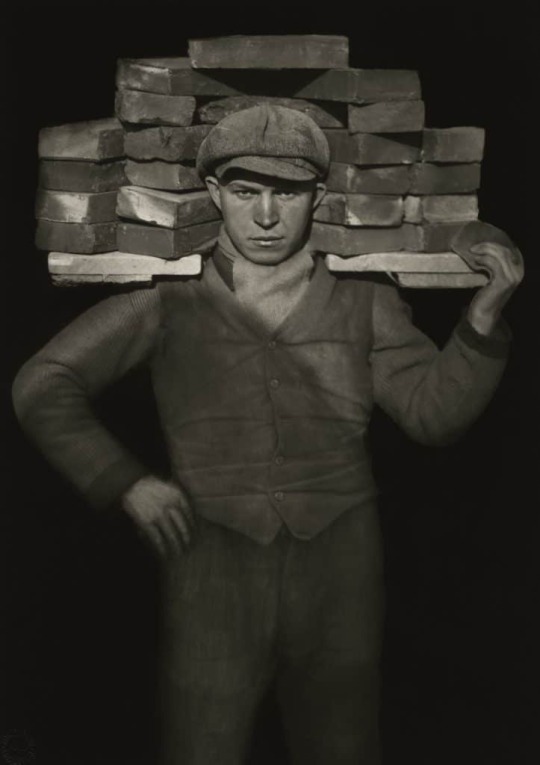
La première partie de l’entre-deux-guerres apparaît comme ailleurs comme une parenthèse, dans une Allemagne en ébullition qui hésite entre les promesses offertes par le progrès social et technologique, et la nostalgie d’un empire synonyme de puissance.
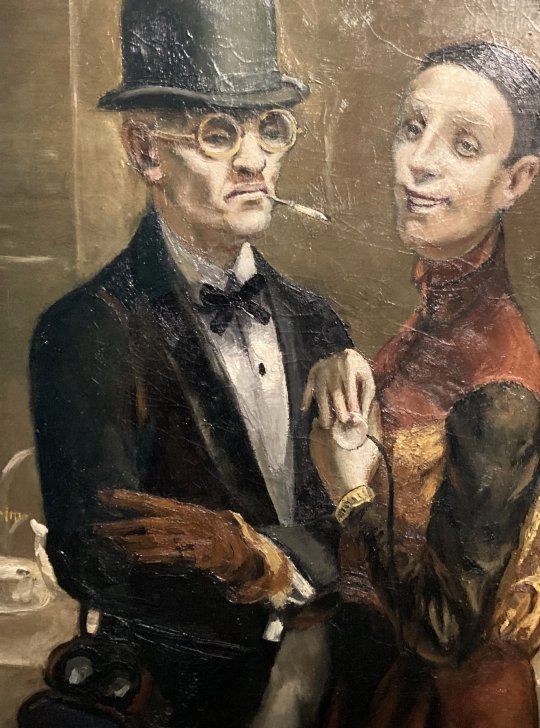
L’impressionnant travail photographique d’August Sander fait office «d’exposition dans l’exposition». Dans une démarche documentaire, le portraitiste originaire de Cologne réalise « une coupe transversale de la société allemande, reflétant les bouleversements et les distorsions de son histoire ».
Familles ouvrières ou paysannes, grands ou petits bourgeois, artistes ou marginaux : les séries de portraits rassemblées au Centre Pompidou constituent un témoignage sans équivalent du quotidien et des divisions de l’Allemagne de Weimar.

L’ensemble est d’une richesse exceptionnelle et notamment du fait qu’une grande matière à réflexion est proposée par ces nombreuses œuvres, sans pour autant que ne soit résolu le mystère de cette période sociale et politique aussi sombre que complexe. Ce sont ces années charnières qui menèrent aux affres de la seconde guerre mondiale, on scrute les images et on lit avidement tous les commentaires proposés dans l’espoir de saisir un nouvel éclairage sur ce qui fit advenir l’horreur.
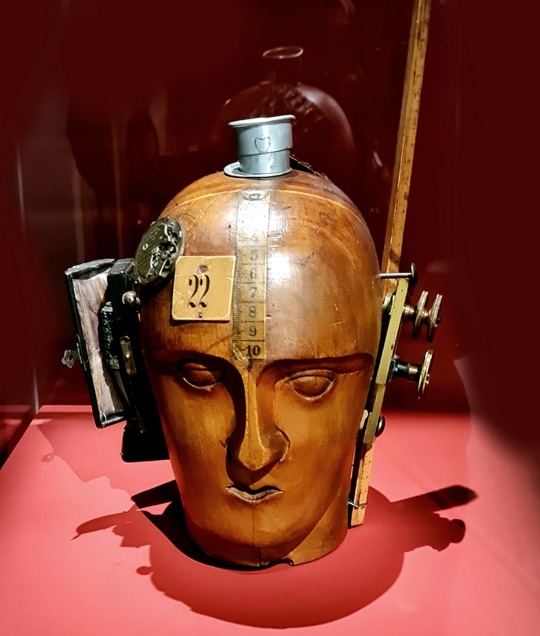
Aucune explication ni aucune analyse n’est proposée, mais grâce à la monstration de ces nombreuses œuvres aussi radicales que dérangeantes, une certaine lumière s’impose, envers et malgré tout.

9 notes
·
View notes
Text
what’s happening with “North America’s oldest company” and “Canada’s most prominent department store”



-------



-------


-------

-------


The largest anchor tenant at Coquitlam Centre has been forced to shutter its doors. A representative with the shopping mall told Daily Hive Urbanized the lease for Hudson’s Bay Company (HBC) has been terminated after the retailer failed to pay rent. Hudson’s Bay was Coquitlam Centre’s largest anchor retailer for decades [...]. According to the report, HBC has not paid any rent to eight landlords in Ontario, Quebec, British Columbia, and Florida, based on legal filings. The leases are worth $20 million monthly across 21 locations. In the BC interior, the landlord of Cherry Lane Mall in Penticton served their HBC location with an eviction notice last week, and filed a lawsuit against the retailer for unpaid rent totalling $546,000. [...] In Eastern Canada, landlord Oxford Properties sued HBC for $2.3 million in unpaid rent for two locations in Quebec City and Ottawa. The retailer indicated its sales at the two locations fell by more than 99% in April. Furthermore, HBC has reportedly not paid rent for its stores at eight of the 11 Oxford-owned malls in Canada where it has locations. [...]
-------


-------

-------
Excerpt:
-------
Three-and-a-half centuries after Hudson's Bay Co. received its first charter — giving Prince Rupert and his "Company of Adventurers of England" an exclusive trading monopoly over the entire Hudson Bay drainage basin — its biggest symbol of colonization is coming to an end.
In February [2021], the company plans to close its six-storey flagship store at Portage Avenue and Memorial Boulevard, literally Canada’s gateway to the West. When it opened in 1926, its palatial architecture was an homage to proper and profitable English civilization. As a testament to the Empire, the Union Jack once flew high on its rooftop, towering over a burgeoning city, pronouncing progress and evolution.
Inside were goods manufactured from Canada’s settling of the plains: furs, blankets, and, eventually, Guess cologne [...]. Everything Canada, including Olympic gear, came from HBC. [...]
So, this is how colonization ends. The people who profit the most take all they can from the land and people within it, and then quietly leave when there’s nothing left to take. Soon, all that will be left is an empty, lifeless pile of plaster and metal that will cost millions to repair or remove for those who actually live here.
Really, though, this is how colonization continues. HBC is not a retail empire — never really was — but a massive real estate company. Just as King Charles II gave Prince Rupert lands that were not his to give, HBC holds deeds to billions of dollars of global property (much within former Rupertsland itself) and will march on. [...]
HBC’s legacy of exploitation, violence and theft is permanent, though.
HBC began with profits from the slave trade and cheap goods from the British colonies. It was instrumental in manufacturing goods for the Commonwealth [...]. Alongside were billions built off Indigenous lands and resources.
On its website, HBC admits it "relied on Indigenous expertise for general survival, surveying, trapping, translating, kinship and much more" to build the company, but when it came to sharing profits and the land (particularly when transferring Rupertsland to Canada in 1870), everything was done "without consulting First Nations or Métis inhabitants." [...]
So, yes, the HBC building means a lot to Winnipeg beyond warm memories of the Paddlewheel restaurant [...]. The building is the face of British occupation [and] theft [...].
-------
Text published by: Niigan Sinclair. “Right place, right time: Downtown Bay building a monument to colonization’s brutality, but it could be transformed into a place of Indigenous positivity, reconciliation.” Winnipeg Free Press. 5/6 October 2020.
367 notes
·
View notes
Text
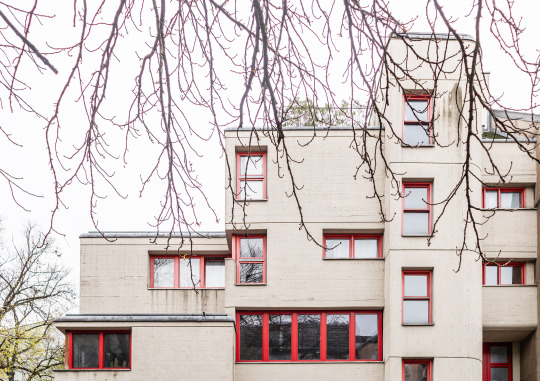

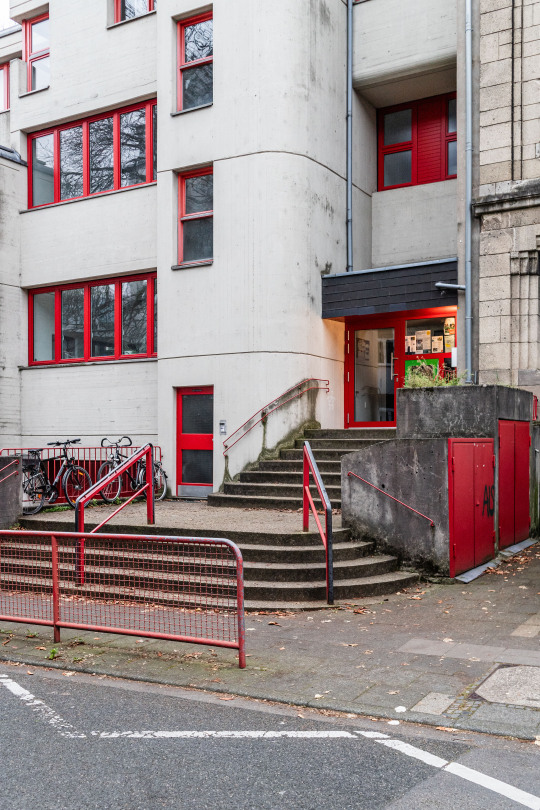
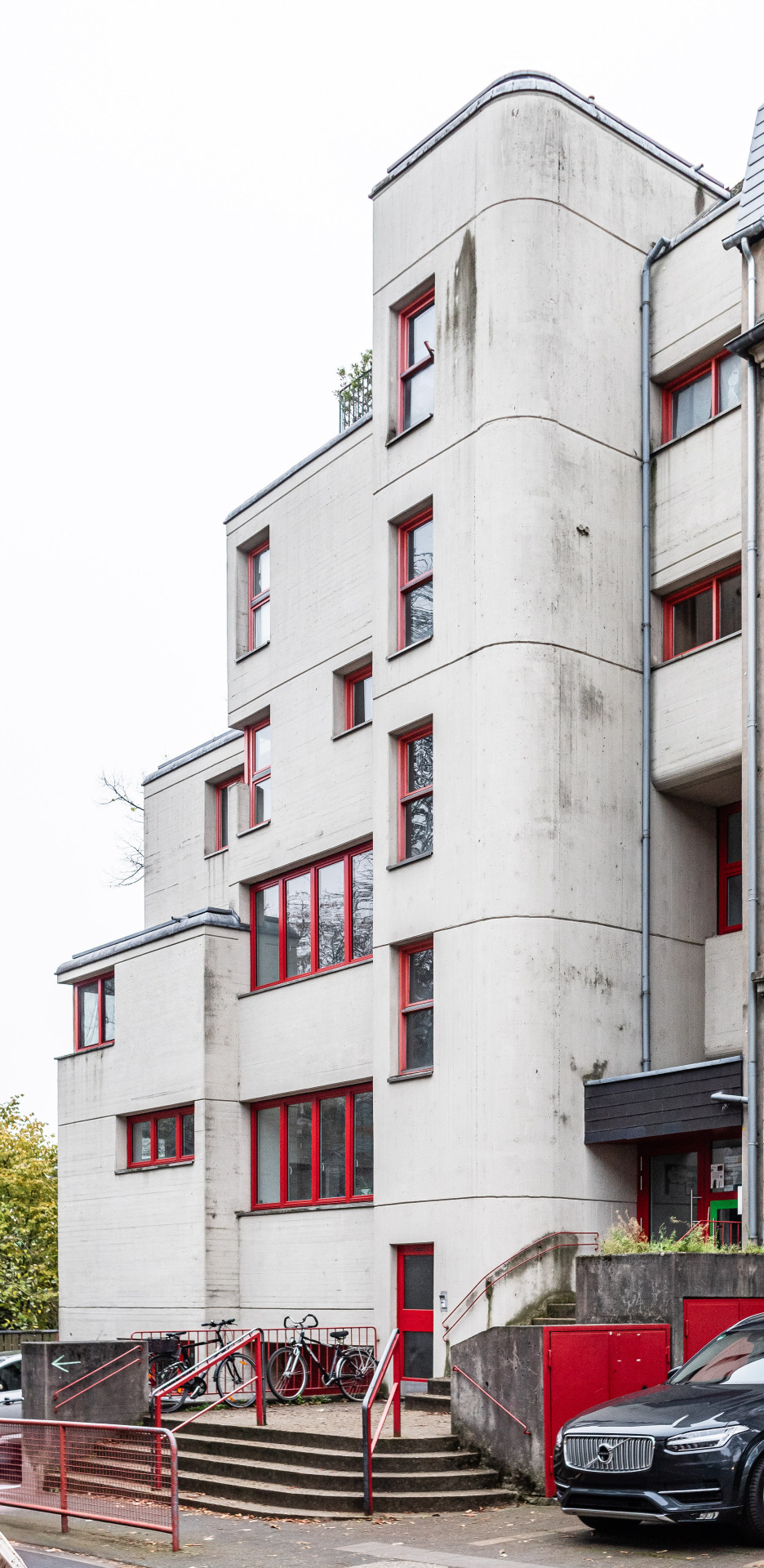
gneisenaustraße // köln nippes
architect: paul georg hopmann
completion: 1974
this brutalist gem, which houses a kindergarten and a community centre, is located in the heart of cologne's nippes district. the striking façade design of pure concrete and red window and door frames, as well as the fragmented structure, make the building a real eye-catcher. the red colouring also extends to the railings, letterboxes and service openings, contributing to the coherent overall impression.
dieses brutalistische kleinod, welches einen kindergarten und ein gemeindezentrum beherbergt, befindet sich mitten in köln nippes. die bemerkenswerte fassadengestaltung von purem beton und roten fenster- und türrahmungen sowie die zergliederte struktur machen das bauwerk zu einem echten hingucker. die rote farbgestaltung erstreckt sich außerdem auf geländer, briefkästen und versorgungsöffnungen, so dass dies zum schlüssigen gesamteindruck beiträgt.
#paul georg hopmann#cologne#moderne#design#köln nipppes#nippes#nbrutalism#brutal archtecture#photography#architecture#germany#architecture photography#urban#nachkriegsmoderne#post war architecture#nachkriegsarchitektur#nachkriegsarchitektur köln#nachkriegsmoderne köln#nachkriegsarchitektur rheinland#nachkriegsarchitektur deutschland#nachkriegsmoderne rheinland#nachkriegsmoderne deutschland#post war modern#german post war modern#german post war architecture#rhineland post war architecture#rhineland post war modern#cologne post war modern#cologne post war architecture
547 notes
·
View notes
Text

House Malotki (1970) in Cologne, Germany, by Peter Busmann
313 notes
·
View notes
Photo

Gerling Finance Group HQ. Cologne
0 notes
Text
Watch What Happens - Chapter 4
Chapter links: 1, 2, 3
Summary: Arthur, an aspiring comedian, has struggled to find normalcy and compassion his entire life. Y/N, a hard-working paralegal and transplant to Gotham, has just been put on a case for the Wayne Foundation. When they meet, unexpected sparks fly.
Chapter warning: Swearing
Words: 2,803
A/N: The joke Arthur comes up with in the third part of this chapter doesn’t completely work with a “Y/N,” because it uses the OFC’s name for alliteration. (The OFC version of this fic is posted on AO3.) Sorry!

It was Saturday. Y/N was supposed to have the day off, but she’d spent her Friday night reading parts of the Wayne file. It had been engrossing. From what she’d gathered, the foundation wanted to convert the rent-controlled housing buildings into a medical clinic. The buildings in question had all but been abandoned, the motions claimed, and were in serious disrepair.
The current owner’s response had been lackluster - a counter-motion stating both the addresses in question were up to code and actively being used. But they had neglected to provide more than a couple leases or rental agreements. She wasn’t surprised. The motions were dating back two years. She could imagine the current owner, a family that had had possession of the buildings since the late 1800s, was running out of funds. Their most recent filings were done without a lawyer.
The addresses were about two miles uptown from her apartment. Seeing at least one of them would give her a chance to determine what the actual situation was. And it gave her a good excuse for a brisk walk. She checked the clock as she finished her coffee: 7:13 AM. Good. She hoped it was early enough to visit one of the buildings and look it over without being noticed. She slipped on a thick coat, grabbed her purse and an umbrella, and headed outside.
Gotham was dreary this morning, an unpredictable drizzle. She still wasn’t use to the city’s typical Eastern rain. At least it wasn’t snowing yet - Patricia had told her winter seemed to come earlier every year. This was the one season she missed being further South. The autumn lasted for weeks back home; she’d still be wearing a light jacket.
She eyed the architecture as she walked. It became less decorative the further she went. Gone were the porticoes and fancy facades of the wealthier parts of the city, replaced by simple brick and concrete. There was a brutality in how quick the change was, as if the builders thought people in cheaper apartments couldn’t enjoy aesthetics. Parks and artwork grew rarer, too, until the area was almost totally devoid of public spaces.
Letting out a breath, she approached one of the apartment complexes. The four story building was uncharacteristically stout for Gotham. A tenement covered in graffiti. Walking around it, she lightly inspected the foundation for faults that would be obvious to her layman’s eyes. There were no cracks, no chunks appeared to be missing.
The front door was ajar, held open with a triangular piece of wood. She gingerly pushed it open, trying not to make any noise, and let herself in. The entrance was in some disrepair. Dark green paint peeled in the corners of the lobby, the laminate floor was coming up in some places. The florescent lights were on, though, and the floor was shining. Whoever lived there cared enough to clean the place.
The stairs were solid when she stepped on them, the railing a bit wobbly but sturdy enough to put her weight on it. As she reached the second floor, she wondered where the Wayne Foundation had gotten the idea that this building was abandoned. She walked down the hall, noticing every name plate and personal touch - a postcard of a sunny place here, a wreath there - on the doors.
“Hey, who are you?”
Y/N stopped and turned to the direction the voice had come from. An elderly woman stood there, newspaper in one hand, pink robe being held closed by the other. She looked displeased.
Fuck. Y/N cursed herself, both for being too bold and being too stupid to think about being seen by a tenant. She gave the woman a friendly smile and approached her. “I’m sorry to have bothered you, ma'am. My name is Y/N. I just wanted to see-”
The woman’s face softened. “Oh, you’re not from Renew Corp.?”
Y/N furrowed her brow in confusion. “Renew Corp.?”
“Yeah. They keep harassing us. You hold on a minute.” The woman disappeared for a moment, closing the door.
Y/N sighed and leaned against the wall. She didn’t want to stumble onto anything crazy; she just needed to gather evidence to support the Wayne Foundation’s position. She wanted to do her job and do it well. Rubbing her face, she could already feel a headache coming on. The first Wayne case she was entrusted with, and she was already finding leads she didn’t want to.
God dammit. She knew she wouldn’t be able to let this go.
As soon as the woman returned, Y/N straightened up. “Here you are,” the woman said, handing her the letter. “They keep sending them in these red envelopes. As if that could scare me. I lived through the war.” She laughed to herself.
Y/N couldn’t help but smile back as she read the addressee’s name. After opening the envelope, she scanned the letter. “Ms. McPhee, may I keep this?”
“Go ahead. I’ll get another one in a few days,” Ms. McPhee answered.
Y/N tucked the letter in her purse. “Thank you.”
Ms. McPhee nodded. “Sorry about earlier. We don’t get many visitors here.” She gestured behind here with her thumb. “Do you want to come in for a cup of tea? I have a cat. You’re not allergic, are you?”
Y/N took a step back, placing a hand over her chest. “I’d love to but I have to get going. Would it be alright if I dropped by sometime? Asked a few more questions?” There was a pause. At Ms. McPhee’s expression, Y/N added, “Bring some tea biscuits along?”
That got her.
~~~~~
On the way back to her apartment, while still in Otisburg, Y/N decided to treat herself to breakfast. A couple of diners lined the streets, but food from a greasy spoon wasn’t what she was looking for. A bakery would work; she could get something light and sweet. A donut shop caught her eye. And her nose. She peeked in through the old, warped windows. Lackluster lighting, just enough film on the glass to make her question the place’s health inspection certificate. She’d found her joint.
The row of people waiting against the wall surprised her when she went inside. After a few moments deliberation, she decided to stay, not having concrete plans for the rest of the day. Copies of the Gotham Gazette were piled high, not yet in their display case. Shuffling along as the line moved forward, she grabbed a paper and started reading the headlines: “Thomas Wayne - Will he or won’t he?;” “A New Day for Gotham;” “New Budget Cuts Risk Safety.” God, news like this made her wish she gave less of a shit. She closed the paper and looked up towards the entrance, the bell above the door ringing endlessly as more people poured in.
And there he stood. Good hair, Tan jacket. He was leaning against the wall, seven people down from her. She noticed he was wearing a brown cardigan and button-up shirt. His hair was a little damp, probably from the weather. It didn’t affect his good looks in the slightest.
She hadn’t expected his eyes to dart to hers so quickly.
Heat rose to her cheeks. Dammit, she scolded herself. You’re staring at him again. Leave the man alone, you idiot. She tried to focus on the menu hanging overhead.
That focus failed utterly when she saw him sidle up beside her in her peripheral vision. He stopped about two feet away. As it had at the store, it took him a few moments to speak. “Hi,” he said.
“Hey,” she replied, eyes still averted. “Fancy seeing you again.”
“Yeah.” He looked up at the menu, too, but she wasn’t convinced he was reading it.
She allowed herself a glance at his profile, long enough to realize it was a mistake if she wanted to stop ogling him. She was close enough to see the hint of laugh lines at the corner of his eye, the rounded tip of his nose, that damned jawline. She swallowed and looked down. His hand was worrying his pocket. The tension with which he held himself was obvious. It was hard to figure out if his hesitancy was peculiar or adorable. She decided it was both. “How was your TV dinner?” she asked.
“Fine. They’re always the same. Yours?” His deep voice was slightly raspy when he answered.
She gave a small shrug. “It didn’t kill me.”
The man chuckled at that and flicked his eyes to her for a moment. “Good.” The line moved forward and he stepped with her. “You should get the-”
“Hey, buddy,” a voice from the back bellowed. “You can’t just cut in line.”
The effect on Good hair, Tan jacket was immediate. He stiffened even further, cheeks turning pink, his jaw clenching. He briefly brought his hand to his mouth and winced. As he spoke, softly but loud enough for the asshole in the back to hear, his eyelids fluttered shut. “I wasn’t cutting. I just wanted to say hello.”
The fact that he responded surprised her. She liked it. When he started to turn towards the end of the line, she stepped closer to him. “What do you want? I’m next in line.” When he didn’t answer, she said, “I’ll grab it. It’s no big deal.”
He blinked at her before digging into his pocket and handing her change. "Cinnamon sugar. I was going to suggest you get it. It’s the best one.”
Smiling, she nodded. “Thanks for the recommendation. It’s my first time here.” She extended her hand to him. “I’m Y/N, by the way.”
He looked at her hand before grasping it gently with his. “My name’s Arthur. Arthur Fleck.” The smoothness of his palm was warm on hers, the fingertips of his long fingers resting against the back of her hand. “I’ll wait outside.” With that, he released her and left.
After getting their order, she left the shop to find the morning’s drizzle had turned to a steady rain. Arthur was standing under the shop’s awning, smoking. She thought she’d detected the scent of nicotine. And maybe some cologne. “Here. You got the last cinnamon sugar.” She started to hand him the donut.
He shook his head. “I’ll take the other.”
“I hope you like chocolate.” Y/N gave him the small wax paper bag. “Can you tell me where the nearest subway is? I need to head home.”
“Newkirk Plaza.” His brows knit together and he looked down as he took a long drag off his cigarette. “I could walk you there?”
She noticed he’d said it quickly, as if he didn’t want to lose courage. She took the umbrella from inside her coat and opened it, then stuck her arm out so he’d have room to share it. “Sure. That’d be great.”
“Yeah?” He laughed softly, surprise on his face. “Okay.” Cautiously, but with some eagerness, he stepped under her umbrella. He seemed to hold his breath as they started walking in the direction of the train station.
They strolled in companionable silence. As each block ended and another began, she found herself wishing he would talk. He’d invited her on the walk, after all. Maybe she could bring him out. “Have you in lived in Gotham long?”
He flicked his cigarette on the ground and let out a small huff. “All my life.”
“You’re a real Gothamite, then. I’m a transplant. Moved here about a year and half ago.”
“Oh yeah? Where from?”
“Boonville, Missouri.” Waving her hand dismissively, she continued. “Trust me. You’ve never heard of it.”
He looked at her, studying her face for a moment. “You don’t have an accent,” he said.
Y/N rolled her eyes. “That’s intentional.” She adjusted the umbrella in her hand. “I made sure to lose it as a kid. When I eventually moved away, I didn’t want to be out of place. It’s nice to be anonymous.”
Arthur took out another smoke and placed it between his lips. “But why come here? It’s so cold. People are mean. The garbage strikes…” He lit his cigarette. “It’s rough.”
“Believe me. Small towns have their own problems. They’re just not as visible. And everyone knows each other. God, it’s disgusting.” She laughed, then. “No, I really love it here. Best decision I’ve ever made.”
He shook his head, the corner of his mouth rising. “Hm.”
When the sign for Newkirk Plaza was in view, his steps slowed. Y/N noticed. He must have enjoyed walking with her. She liked it, too, which felt odd, since he was a stranger. Odd but good.
Arthur stopped as they reached the entrance to the station. He looked away from her and down the stairwell, as if what bit of confidence he had was ebbing. “If you go down these stairs, you can pick which line you want.”
Y/N nodded and smiled. “Thanks for the stroll, Arthur.”
“Yeah.” After a few beats of silence, he gazed back up at her. “You know, I do stand-up comedy?”
She looked at him in disbelief. This guy? This bashful guy got up on stage in front of people? “Really?”
“Maybe you could come see a show sometime,” he said.
She studied him for a few moments. The slight puffiness under his eyes, the tiredness in his face. The way he stood there, waiting for her reply with cautious hope, gave him an air of quiet fragility. Even though she was intrigued by him, she wasn’t ready to give her personal information out. Not yet. She wracked her brain, trying to think of a kind but honest answer. “Well, my job is going to be bringing me to this area again soon. When we see each other, you can tell me when and where, okay?”
He smiled slightly at the non-committal response. “All right.”
Y/N tried to hand him the umbrella. “I suspect you have a ways to walk.”
He put his hand up, then pulled the hood on his jacket over his head. “It’s okay, I just live over on Anderson.”
“Oh, okay.” She cleared her throat. “Well, I’ve gotta go. See you around, Arthur." She started down the stairs, then turned to him again, blushing lightly as she met his eyes. “Thanks for the donut, too.”
~~~~~
Arthur felt like he could take on the world (or at least Gotham City). The nice woman from the store had somehow wound up in his nearby donut shop. He’d said hello. They’d gone for a walk. Shared an umbrella. Had a conversation. He hadn’t fucked up.
When at the train station, he’d been tempted to follow her, not wanting to lose the connection they’d had. But he’d trailed his neighbor, Sophie, to work one time in a pathetic attempt to ask her out. He hadn’t worked up the nerve to do it by the time they’d reached Sophie’s place of employment, so he’d turned around. That evening, she had knocked on his door and explained, with more kindness than he deserved, that he’d alarmed her and following her was inappropriate. Even though he had been embarrassed, he appreciated her taking the time to spell it out for him.
He was determined not to do something that stupid with Y/N.
Sophie. Y/N. What was it with woman with (Y first initial) names? They’re both saucy and sweet. Laughing lightly, he exited the elevator and headed towards his apartment.
“Mom, I’m back.” After hanging his jacket, he put the donut on a small plate and cut it into bite-sized pieces. That would make it easier for Penny to eat. He poured her a cup of coffee and headed into the living room.
His mother was asleep in the easy chair. “Good Morning Gotham” was playing on the TV. Arthur approached her gently and shook her shoulder. Her eyes slowly opened. It took a few seconds for her to focus on him. “Oh, Happy, did you check the mail?”
“It’s too early. The mail hasn’t come yet.” He put the plate in her hands. “Here. Eat this. I’m going to do laundry. I’ll be in the basement.”
She kept her eyes on the television when she gave her delayed answer. “Okay, Happy.”
Arthur stepped by her, basket in hand. On the way out, he grabbed his pen and journal. Once the laundry was on, he sat in a chair across from the machine and opened the worn notebook across his lap.
He thought of Y/N for a while, then his upcoming job at the children’s hospital on Wednesday. He’d been practicing his magic tricks, but would end with a dance. He loved working there. The kids were always so happy to meet Carnival the Clown. Maybe the upcoming week would be decent. A little kinder than most.
Tag list (Let me know if you want to be added!): @harmonioussolve @clowndaddyfleck @stephieraptorr
#arthur fleck#arthur fleck x reader#arthur fleck x female reader#arthur fleck fanfic#arthur fleck x ofc#joker 2019#watchwhathappens
68 notes
·
View notes
Photo

University library of Cologne, 1966, Rolf Gutbrod
94 notes
·
View notes